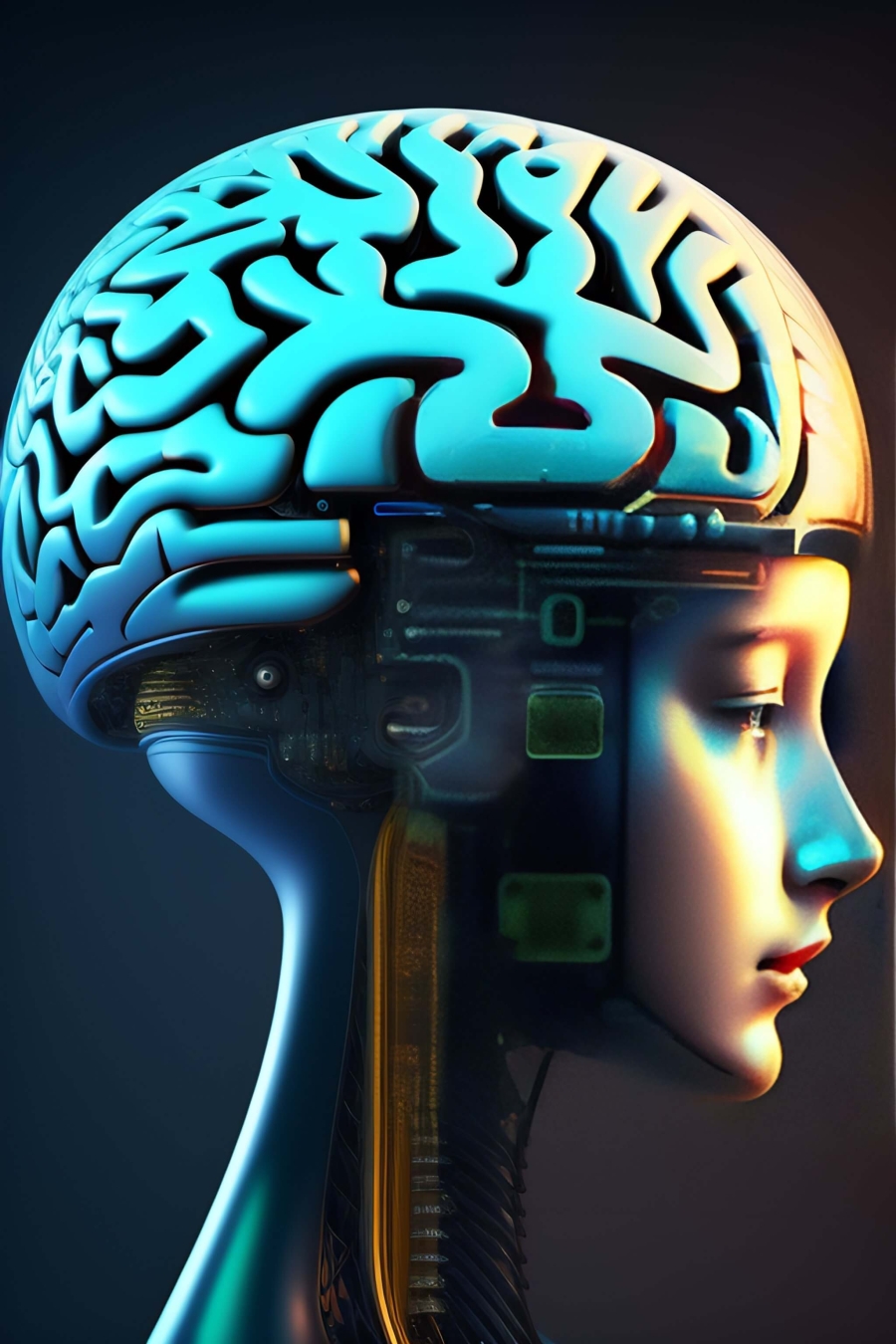What is AI?
What is AI?
Artificial Intelligence (AI) has become a buzzword in today's technological landscape. From sci-fi movies to real-world applications, AI is transforming the way we live, work, and interact with technology. But what exactly is AI, and how does it work? In this article, we will delve into the depths of AI, exploring its definition, applications, and impact on various industries.
Table of Contents
1. Introduction to AI
2. Understanding Artificial Intelligence
1. Defining AI
2. The Evolution of AI
3. Types of AI
4. AI vs. Human Intelligence
3. Applications of AI
1. AI in Healthcare
2. AI in Finance
3. AI in Manufacturing
4. AI in Transportation
5. AI in Customer Service
4. How AI Works
1. Machine Learning
2. Deep Learning
3. Natural Language Processing (NLP)
4. Computer Vision
5. Robotics
5. AI Ethics and Concerns
1. Bias and Fairness
2. Privacy and Security
3. Unemployment and Job Displacement
4. Human-AI Collaboration
6. The Future of AI
7. FAQs (Frequently Asked Questions)
1. Introduction to AI
In the simplest terms, Artificial Intelligence refers to the simulation of human intelligence in machines that are programmed to think and learn like humans. AI enables computers and systems to perform tasks that typically require human intelligence, such as visual perception, speech recognition, decision-making, and problem-solving.
2. Understanding Artificial Intelligence
2.1 Defining AI
AI can be defined as a branch of computer science that focuses on creating intelligent machines capable of mimicking human behavior and cognitive processes. These machines can analyze vast amounts of data, identify patterns, make predictions, and continuously improve their performance through learning.
2.2 The Evolution of AI
The concept of AI has been around for decades, but recent advancements in computing power and data availability have propelled it to new heights. Initially, AI was limited to rule-based systems and expert systems that relied on pre-programmed knowledge. However, with the advent of machine learning and deep learning algorithms, AI has advanced significantly.
2.3 Types of AI
AI can be classified into two main categories: Narrow AI and General AI. Narrow AI, also known as Weak AI, is designed to perform specific tasks within a limited domain. It excels at tasks such as voice recognition, image classification, and recommendation systems. On the other hand, General AI, also referred to as Strong AI or AGI (Artificial General Intelligence), possesses human-level intelligence and can understand, learn, and apply knowledge across different domains. However, General AI remains a concept that is yet to be fully realized.
2.4 AI vs. Human Intelligence
While AI has made remarkable strides in imitating human intelligence, it still falls short in many aspects. Human intelligence encompasses a wide range of cognitive abilities, including creativity, empathy, and common sense reasoning, which are challenging for AI to replicate fully. However, AI's ability to process vast amounts of data and perform complex computations gives it an edge in specific tasks and applications.
3. Applications of AI
AI has found its way into various industries, revolutionizing processes, and enabling new possibilities. Let's explore some prominent applications of AI.
3.1 AI in Healthcare
AI is transforming the healthcare sector by enhancing diagnostics, drug discovery, personalized medicine, and patient care. Machine learning algorithms can analyze medical images and identify
abnormalities, aiding radiologists in diagnosing diseases like cancer. AI-powered chatbots and virtual assistants offer round-the-clock support, providing patients with quick answers to medical queries.
3.2 AI in Finance
In the financial industry, AI algorithms can analyze vast amounts of financial data to detect patterns, predict market trends, and make informed investment decisions. AI-powered chatbots and virtual assistants streamline customer interactions, improving the overall banking experience. Additionally, AI-based fraud detection systems help identify suspicious activities and prevent financial fraud.
3.3 AI in Manufacturing
Manufacturing processes can benefit greatly from AI technologies. AI-powered robots and automation systems can perform repetitive and labor-intensive tasks with precision and efficiency. This not only improves productivity but also ensures a safer working environment for humans. AI-enabled predictive maintenance helps identify equipment failures in advance, minimizing downtime and optimizing production schedules.
3.4 AI in Transportation
AI plays a crucial role in transforming transportation systems. Self-driving cars and autonomous vehicles leverage AI technologies like computer vision and sensor fusion to navigate and make real-time decisions on the road. AI algorithms optimize traffic management, reducing congestion and enhancing transportation efficiency. Moreover, AI-powered systems enable predictive maintenance for fleets, minimizing breakdowns and optimizing vehicle performance.
3.5 AI in Customer Service
AI-powered chatbots and virtual assistants are revolutionizing customer service by providing quick and personalized support. These intelligent systems can understand customer queries, provide relevant information, and even assist in resolving common issues. By automating routine tasks, AI frees up human agents to focus on more complex customer requests, leading to improved customer satisfaction.
4. How AI Works
AI encompasses various technologies and techniques that enable machines to exhibit intelligent behavior. Let's explore some of the fundamental components of AI.
4.1 Machine Learning
Machine Learning (ML) is a subset of AI that focuses on enabling machines to learn from data and improve their performance over time. ML algorithms can be broadly classified into three types: supervised learning, unsupervised learning, and reinforcement learning. Supervised learning involves training a model with labeled data to make predictions, while unsupervised learning involves finding patterns in unlabeled data. Reinforcement learning uses a reward-based system to train models through trial and error.
4.2 Deep Learning
Deep Learning is a subfield of Machine Learning that utilizes artificial neural networks to learn and make predictions. These neural networks are inspired by the structure and functioning of the human brain. Deep Learning has shown remarkable success in tasks such as image and speech recognition, natural language processing, and autonomous driving.
4.3 Natural Language Processing (NLP)
NLP focuses on enabling computers to understand and process human language. NLP algorithms can analyze text, extract meaning, and generate human-like responses. This technology powers virtual assistants, chatbots, and language translation systems.
4.4 Computer Vision
Computer Vision enables machines to interpret and understand visual information from images and videos. AI algorithms can identify objects, recognize faces, and even analyze complex scenes. Computer Vision has diverse applications, ranging from autonomous vehicles to medical imaging and surveillance systems.
4.5 Robotics
Robotics combines AI, machine learning, and physical systems to create intelligent machines capable of performing tasks autonomously. AI-powered robots can interact with their environment, adapt to changes, and execute complex tasks with precision. Robotic systems find applications in industries such as manufacturing, healthcare, and agriculture.
5. AI Ethics and Concerns
While AI brings numerous benefits, it also raises ethical concerns and challenges that need to be addressed.
5.1 Bias and Fairness
AI systems are trained on data, and if the data used for training is biased, it can lead to biased outcomes. Ensuring fairness and avoiding discrimination
in AI algorithms is a critical ethical consideration. Efforts are being made to develop unbiased training datasets and implement fairness metrics to mitigate bias in AI systems.
5.2 Privacy and Security
AI relies on vast amounts of data, often personal and sensitive information. Protecting privacy and ensuring data security are paramount. Safeguarding data from unauthorized access and using encryption techniques to protect sensitive information are crucial in AI systems.
5.3 Unemployment and Job Displacement
The increasing adoption of AI technologies raises concerns about job displacement and unemployment. While AI may automate certain tasks, it also creates new opportunities and shifts the workforce towards more complex and creative roles. Reskilling and upskilling programs can help individuals adapt to the changing job market.
5.4 Human-AI Collaboration
Ensuring effective collaboration between humans and AI systems is vital. Combining the strengths of AI technologies with human expertise can lead to more accurate decision-making and innovative solutions. Ethical considerations such as transparency, explainability, and accountability are essential for human-AI collaboration.
6. The Future of AI
The future of AI holds immense potential. Advancements in AI technologies, coupled with increasing computational power, will lead to new possibilities. From healthcare to transportation, education to entertainment, AI will continue to transform industries and reshape our daily lives. Continued research, ethical guidelines, and responsible development are crucial for realizing the full potential of AI while addressing associated challenges.
7. FAQs (Frequently Asked Questions)
Q1: What are some popular AI applications in everyday life?
AI applications in everyday life include virtual assistants like Siri and Alexa, personalized recommendations on streaming platforms, fraud detection in banking, and autonomous driving technologies.
Q2: Can AI replace human jobs?
AI has the potential to automate certain tasks, leading to job displacement. However, it also creates new job opportunities and shifts the workforce towards more creative and complex roles.
Q3: Is AI a threat to humanity?
AI, like any technology, can be used for both beneficial and harmful purposes. Ensuring ethical development and responsible use of AI is essential in mitigating risks and maximizing benefits.
Q4: What are the limitations of AI?
AI still faces challenges in areas such as common sense reasoning, understanding context, and replicating human creativity. Achieving true human-level intelligence remains a complex and ongoing research endeavor.
Q5: How can bias in AI algorithms be addressed?
Addressing bias in AI algorithms requires diverse and unbiased training datasets, rigorous testing, and the implementation of fairness metrics. Ongoing research and collaboration are crucial in this regard.
In conclusion, AI is a powerful technology that holds immense potential in various domains. From healthcare and finance to manufacturing and transportation, AI is transforming industries and improving efficiency. However, ethical considerations, such as fairness, privacy, and human-AI collaboration, are essential for responsible and beneficial AI development. With continued advancements and responsible use, AI will continue to shape the future and contribute to human progress.









Comments (0)